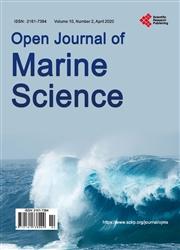Exercise and Structure Improve Juvenile Chinook Salmon Rearing Performance
引用次数: 2
Abstract
This experiment evaluated the use of an exercise routine and vertically-sus-pended structure during juvenile landlocked fall Chinook salmon (Oncorhynchus tshawytscha; mean ± SE, initial weight 1.47 ± 0.03 g, total length 56.4 ± 0.4 mm) rearing. Four treatments were used: 1) no exercise routine nor vertically-suspended structure, 2) exercise and structure, 3) exercise and no structure, and 4) no exercise and structure. Water velocities in tanks without exercise were 12 cm/s, where-as the exercise routine consisted of seven days at 12 cm/s followed by seven days at 18 cm/s. The structure was an array consisting of four vertically-suspended aluminum angles. Total tank gain and percent gain were significantly greater after 50 days in the tanks of salmon subjected to the exercise routine and structure compared to the three other treatments. Gain and percent gain were also significantly greater in the tanks receiving structure without exercise compared to tanks with exercise and no structure or tanks with neither exercise nor structure. Feed conversion ratio was significantly improved in the salmon tanks with structure and without exercise compared to all other treatments. There were no significant differences for individual fish weight, total length, specific growth rate, or condition factor among any of the treatments at the end of the experiment. These results indicate that the use of both an exercise routine and vertically-suspended structure may be beneficial during the rearing of juvenile landlocked fall Chinook salmon.运动和结构对大鳞大马哈鱼幼鱼养殖性能的影响
本实验评估了内陆奇努克鲑鱼(Oncorhynchus tshawytscha;平均±SE,初始体重1.47±0.03 g,总长度56.4±0.4 mm)饲养。采用4种处理:1)无常规运动和垂直悬浮结构,2)运动和结构,3)运动和无结构,4)不运动和结构。在没有运动的水箱中,水的流速为12厘米/秒,而运动常规是7天以12厘米/秒的速度进行,然后7天以18厘米/秒的速度进行。该结构是由四个垂直悬挂的铝角组成的阵列。与其他三种处理方法相比,在接受了这种锻炼方法和结构的鲑鱼的水箱中待了50天后,总水箱增重和百分比增重明显更大。在没有运动的情况下接受结构训练的对照组中,与没有运动和没有结构训练的对照组或既没有运动也没有结构训练的对照组相比,获得的增益和百分比明显更高。与所有其他处理相比,无运动结构的鲑鱼池饲料转化率显著提高。试验结束时,各处理之间的单鱼体重、总长度、特定生长率和条件因子均无显著差异。这些结果表明,在内陆秋季奇努克鲑鱼幼鱼的饲养过程中,使用锻炼常规和垂直悬浮结构可能是有益的。
本文章由计算机程序翻译,如有差异,请以英文原文为准。
求助全文
约1分钟内获得全文
求助全文

 求助内容:
求助内容: 应助结果提醒方式:
应助结果提醒方式:


